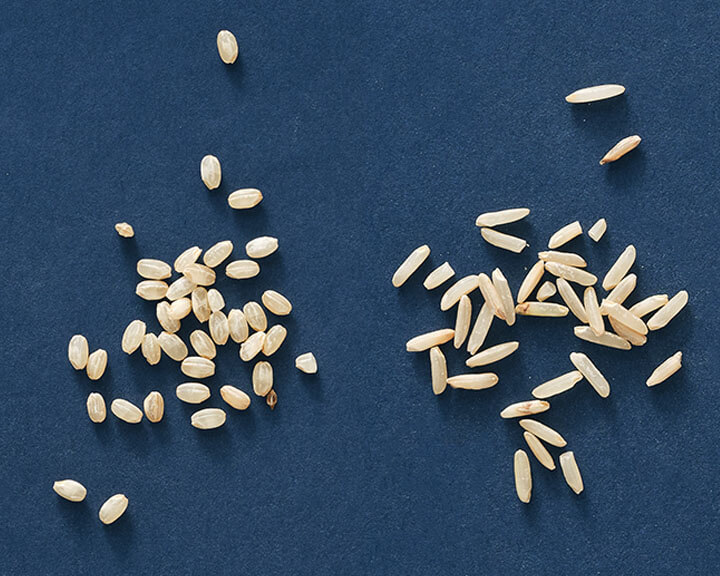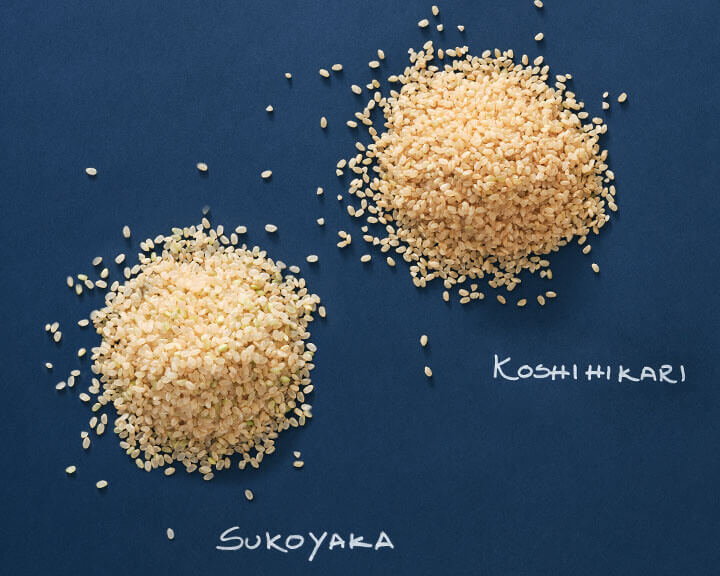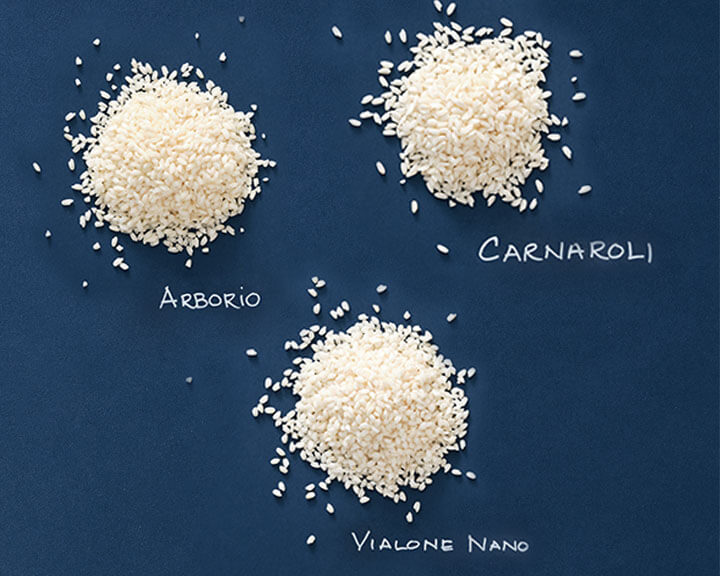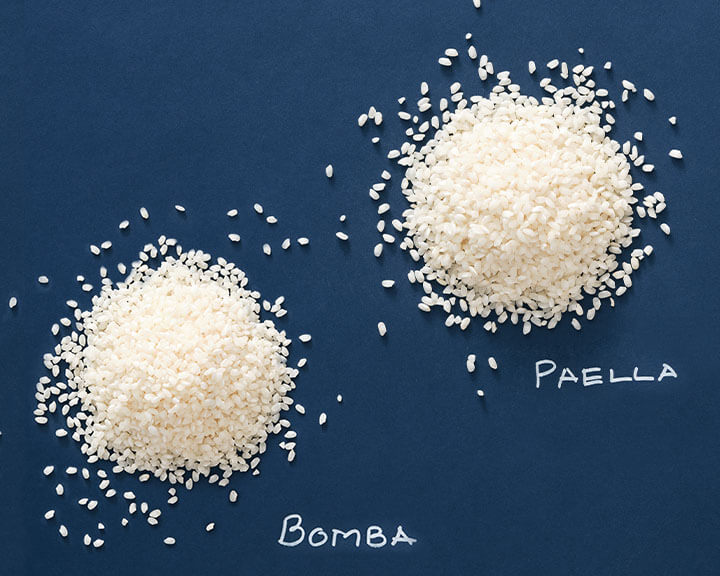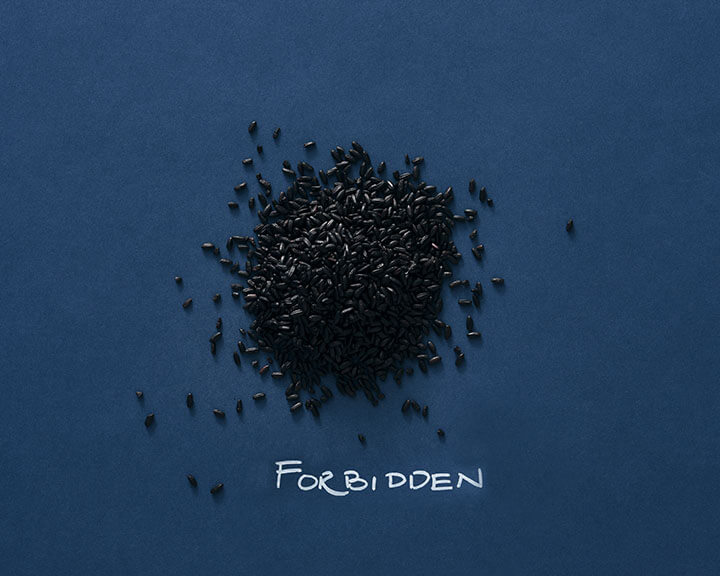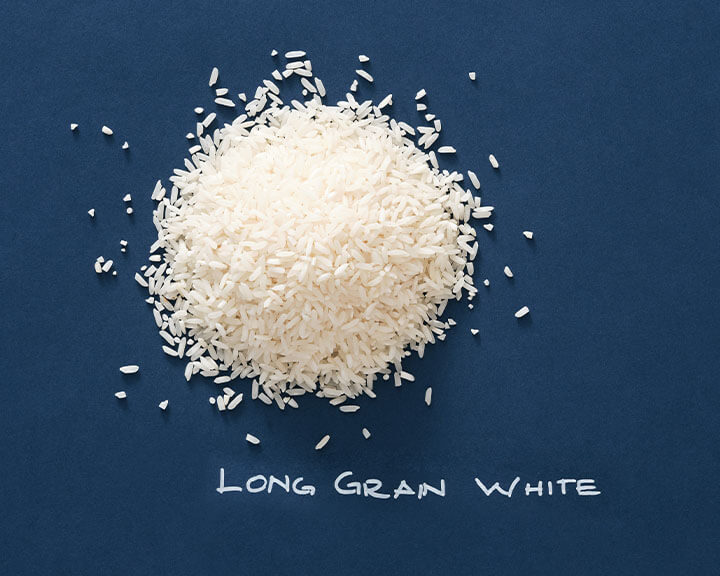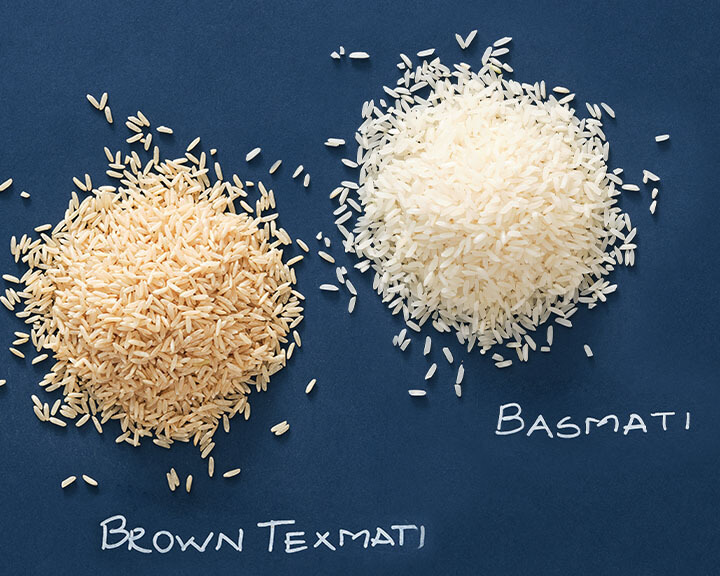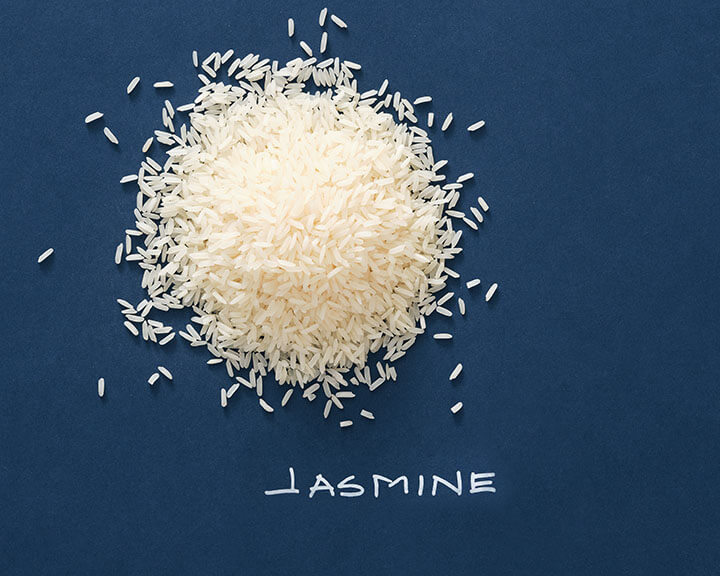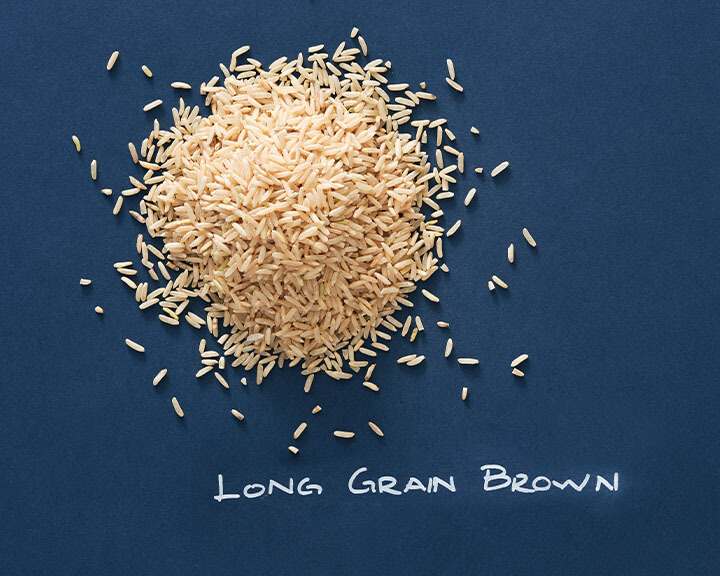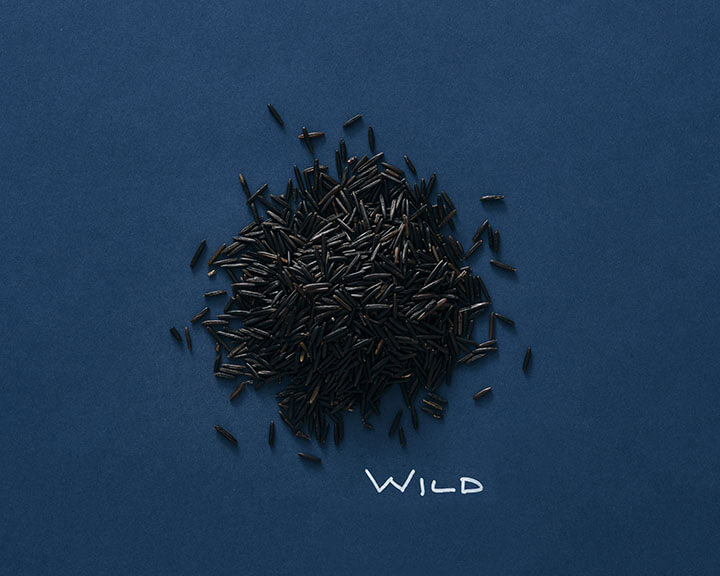
Cooking rice is a simple process, but there’s actually a lot to know. Depending on the grain, rice may or may not need rinsing. Different types of rice also require different amounts of water and different lengths of cooking time. They have different textures, flavors, and nutritional values, and so it's important to select the right variety for each particular use.
Brown vs. White Rice
Think of the difference between brown and white rice as similar to the difference between wheat and white flour. Because brown rice retains its bran and germ, it is nutritious and offers the benefits of eating whole grains (think: fiber, antioxidants, and B vitamins, to start). It requires more time and water to cook than white rice as its fibrous husks must first be softened.
White rice, on the other hand, has a softer, fluffier texture and a more mild flavor. It absorbs water more quickly than brown rice and so generally cooks faster.
Short-Grain vs. Long-Grain Rice
If you browse the rice aisle in our grocery stores, you’ll notice that some grains are only slightly longer than their width while others are up to four times longer, and some fall right in between. Classified as short-, medium-, or long-grained, the world’s thousands of rice varietals all land somewhere along this length spectrum. Short-grain rice (Oryza sativa japonica) tends to be starchier, more moist, and sticky when cooked. Long-grain rice (Oryza sativa indica) has a firmer texture that’s dry and loose. Both short- and long-grain rice can be purchased either white or brown.
Which Rice is Best?
The best rice is the one that matches your application. To make sushi or onigiri, you want starchy, short-grain rice that sticks together. For rice pilaf and biryani, its better to choose a long-grain rice that stays loose. Jasmine rice, while a type of long-grain, is very floral. It's best paired with foods that complement its unique flavor. For salads, consider using nutty, chewy, wild rice; it offers unrivaled flavor, texture, and color. Keep a variety of rice on hand, and you'll be ready for whatever you're in the mood to cook up.
Preparing Rice
Once you’ve selected the right rice for your recipe, be sure to prepare it correctly. Because the starchy endosperm of brown rice isn’t exposed, brown rice doesn’t need more than a quick rinse (if any) before cooking. In contrast, most white rice (especially short-grained varieties) needs thorough rinsing. This removes excess starch and, in some cases, additives such as talc used in the polishing process. Dishes like Thai-style coconut sticky rice, which uses a sweet glutinous rice, benefit from giving the grains an overnight soak.
Cooking Rice
Choose a pot (with a lid) that's the right size for the amount of rice you're cooking. Ideally, the combination of water and rice should reach about halfway up the side of the pot. This provides room for steam and for the rice to double in volume.
Consult the package directions for the type of rice you're using. The ratio of water to rice varies for different rice varieties and quantities. It can also change depending upon your cooking method.
An easy way to cook most rice is to bring the rice and water to boil. Lower the heat and simmer, uncovered, until the water line reaches the surface of the rice. Cover, remove from heat, and allow to rest undisturbed for 10 to 15 minutes or until the water is fully absorbed and the rice is tender. Fluff before serving, being careful not to stir or smash.
Plastic utensils work best for serving sticky rice. Their slick surface keeps rice from sticking.
Check out the list below to learn more about the properties of different varieties and suggested uses.
SHORT GRAIN RICE
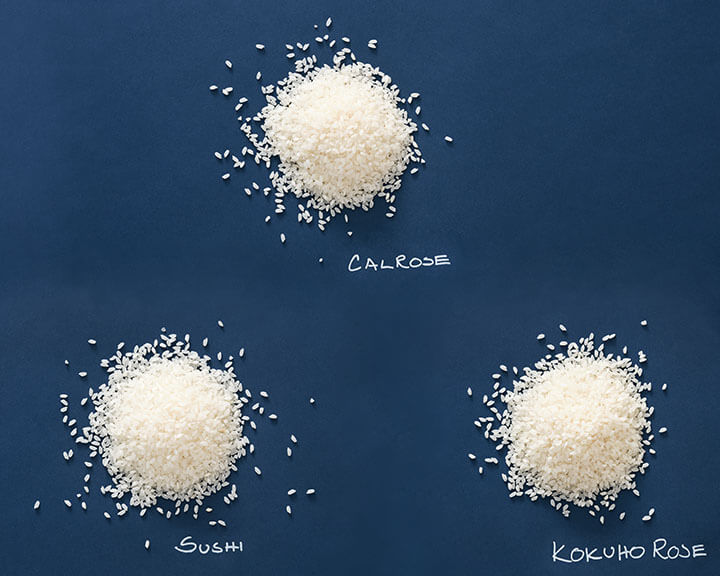
Short Grain White Rice
COMMON TYPES: CalRose, Organic California Sushi, California Supreme Kokuho Rose
STARCHINESS: High
ORIGIN: Japan
WATER-TO-RICE RATIO: 1 ¼:1 (for 1 cup rice)
RINSING: Rinse well, in a fine-mesh strainer, until water runs clear
COOK/REST TIME: 20 minutes/10 minutes
BEST FOR: Sushi, musubi (salted rice balls), side for Japanese curry
Short Grain Brown Rice
COMMON TYPES: Sukoyaka Genmai, Koshihikari (“GABA”) sprouted brown rice
STARCHINESS: Low
ORIGIN: Japan
WATER-TO-RICE RATIO: 1 ½:1 (for 1 cup rice)
RINSING: None, but some rice needs to be soaked before cooking
COOK/REST TIME: 30 minutes/10 to 15 minutes
BEST FOR: Grain bowls, side dish
Risotto
COMMON TYPES: Arborio, Vialone Nano, Carnaroli
STARCHINESS: High
ORIGIN: Northern Italy
WATER-TO-RICE RATIO: 2:1 to 3:1 (depends on recipe)
RINSING: Depends on recipe
COOK/REST TIME: 30 to 60 minutes (depends on recipe)
BEST FOR: Risotto, sweet rice desserts like rice pudding
Paella Rice
COMMON TYPES: Bomba, paella rice
STARCHINESS: High
ORIGIN: Eastern Spain
WATER-TO-RICE RATIO: 2:1 to 3:1 (depends on recipe)
RINSING: 30 to 60 minutes (depends on recipe)
COOK/REST TIME: Depends on recipe
BEST FOR: Paella, sweet rice desserts
Black or Purple Rice
COMMON TYPES: Forbidden rice
STARCHINESS: Low
ORIGIN: Asia
WATER-TO-RICE RATIO: 1 ¼:1
RINSING: Quick rinse
COOK/REST TIME: 20 minutes/10 minutes
BEST FOR: Side dish, grain bowls
LONG GRAIN RICE
Long-Grain White Rice
COMMON TYPES: Wild Harvest Organic
STARCHINESS: Low
ORIGIN: California
WATER-TO-RICE RATIO: 1 ½:1
RINSING: Rinse well, in a fine-mesh strainer, until water runs clear
COOK/REST TIME: 16 to 18 minutes/10 minutes
BEST FOR: Pilaf, burritos, baked rice dishes, side dish
Basmati
COMMON TYPES: Basmati, Indian-style basmati, brown basmati, “Tex-Mati”
STARCHINESS: Low
ORIGIN: India
WATER-TO-RICE RATIO: 1 1/2:1
RINSING: Rinse well, in a fine-mesh strainer, until water runs clear
COOK/REST TIME: 15 minutes/10 minutes
BEST FOR: side dish for Indian curries
Jasmine
COMMON TYPES: Thai Jasmine, California Jasmine
STARCHINESS: Medium
ORIGIN: Thailand
WATER-TO-RICE RATIO: 1 ½:1
RINSING: Rinse well, in a fine-mesh strainer, until water runs clear
COOK/REST TIME: 15 minutes/10 minutes
BEST FOR: side dish for Thai or Chinese food
Long-Grain Brown Rice
COMMON TYPES: Wild Harvest Organic
STARCHINESS: Low
ORIGIN: California
WATER-TO-RICE RATIO: 1 ¾:1
RINSING: None
COOK/REST TIME: 30 minutes/10 minutes
BEST FOR: Grain bowls, side dish
Wild Rice
COMMON TYPES: Fall River
STARCHINESS: Very low
ORIGIN: California, Great Lakes region, Canada
WATER-TO-RICE RATIO: 4:1
RINSING: Quick rinse
COOK/REST TIME: 60 minutes, then drain once grains split and soften. No resting time.
BEST FOR: Stuffing, soups, salads
Three More Tips for Perfect Rice
1. Choose a pot or saucepan that’s just the right size for your rice. The combination of water and rice should ideally come about halfway up the side of the pot, but not more, to provide just the right steaming environment.
2. Once you cover your rice and reduce the heat, never stir your rice during the cooking process. Only when the rice has rested should you dip into it–and in that case, gently fluffing the cooked rice with a fork or a rice paddle (rather than stirring) is best. If you cook rice often, a rice paddle is a good investment.
3. You can reheat rice in the microwave! Add a small spoonful of water to it in the bottom of a microwave-safe container, cover loosely, and microwave until the rice is steaming hot, 1 to 2 minutes (depending on how much you’re reheating). Cover tightly and let steam another minute or two before serving.


